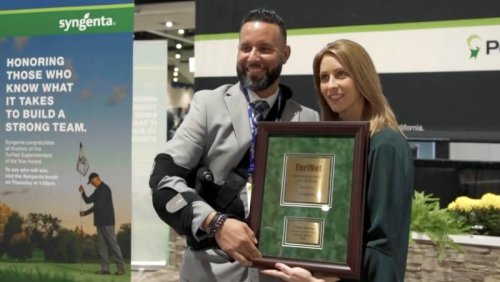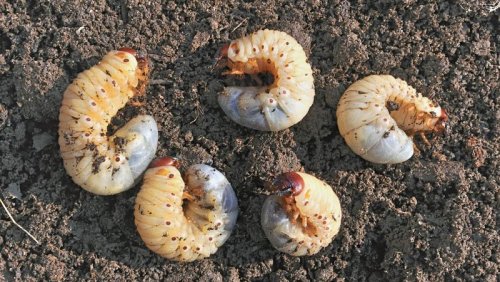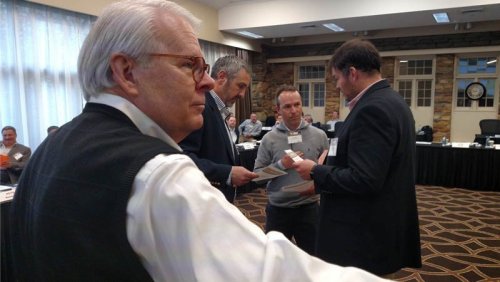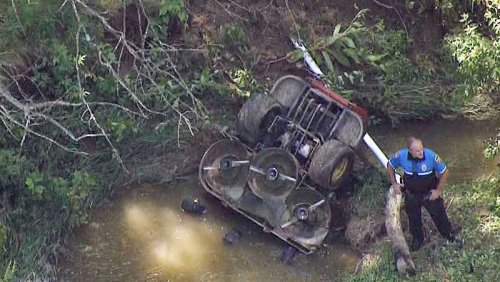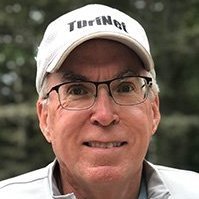
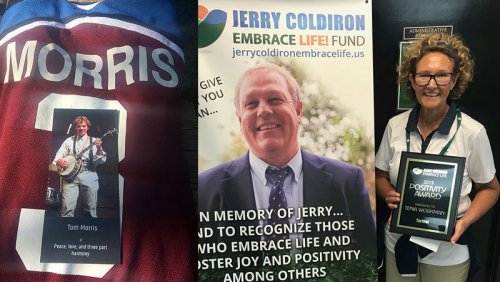
The Jerry Coldiron Positivity Awards are given annually to recognize individuals within the golf turf industry who live lives of positivity, caring, sharing and compassion for others… or who have experienced personal hardship due to illness, natural events or job loss… or who do something special for the natural world (a special thing to Jerry).
The first awards were presented at the 2018 GIS to
Marcos "Mike" Morales of the Buccaneer Golf Club in St. Croix, US Virgin Islands John and Peggy Colo, Jupiter Hills Golf Club, Tequesta, Florida Adam and Erin Engle, Lake Shore Yacht and Golf Club, Cicero, NY John and Nick Paquette, Indian Hills Country Club, Northport, NY The 2019 awards have been presented recently to Tenia Workman, executive director of the Georgia GCSA, and posthumously to Tom Morris, CGCS, 20-year member of the TurfNet hockey team who passed away at age 61 shortly after Jerry, in February 2017.
True leaders inspire others not through words, but through actions.
For golf course superintendents in Georgia, Tenia Workman has been an inspiration for nearly 20 years. The executive director of the Georgia GCSA since 2002, Workman has overseen the development and implementation of a host of programs designed to promote the superintendent profession to constituencies inside and outside the golf industry, and has helped build and nurture a family-like atmosphere among members throughout the chapter.
“Tenia made the Georgia chapter like one big family,” said Ralph Kepple, superintendent at East Lake Golf Club in Atlanta, where the award was presented August 20 during a lull in the preparations for the 2019 PGA Tour Championship. “She’s like a mother to everybody in the association. She’s the glue that keeps us together.”
Tenia Workman with her award plaque at the East Lake Golf Club maintenance facility. She also received a check for $1000. Even when Workman was at her personal worst, like two years ago when she learned she had breast cancer, she was at her best professionally. Workman was diagnosed with cancer in 2017 and underwent a double-mastectomy shortly thereafter.
“Even when she was going through her cancer treatments, she still cared for everyone else,” said Anthony Williams, CGCS, director of golf course maintenance at the Four Seasons in Irving, Texas, and a longtime Georgia superintendent. “She is Saint Tenia in my book. She has been a superintendent wife forever so she knows when to push and when to hold ground and she's a standout in an industry that is often unforgiving, her example gives us all hope.”
The awards namesake carried special meaning for Workman, who not only runs an association for superintendents, but is also married to one.
“I didn’t know (Jerry), but just that this award is named after a superintendent, it means so much more to me,” Workman said. “I would do anything for the superintendents in Georgia. These guys are like family to me.”
The Georgia GCSA recognized Workman’s contributions in December when the group named her recipient of the association’s President’s Award for continuing to serve members while undergoing treatments to fight cancer.
In addition to an award plaque, Workman was presented with a check for $1000 for her personal use, however she sees fit, to do something fun or create joy for herself or her family. Jon Kiger of TurfNet made the presentation at East Lake.
Peace, love and 3-part harmony
Also receiving a Coldiron Award this year was Tom Morris, CGCS, a 25-year career superintendent, 20-year member of our TurfNet hockey team, hockey referee and bluegrass musician who passed away suddenly around Valentine's Day, 2018. His long-time partner, Nancy Jean Henry, organized a town-wide celebration of his life -- TommyFest -- in their hometown of Jamaica, Vermont, last summer. Peter McCormick and several other TurfNet members attended, and wrote about it here.
Nancy Jean Henry and Tom Morris both led lives of "peace, love and 3-part harmony" - Tom's favorite expression.
Tom Morris (r) enjoying a yuck with Joe "Squeak" Kinlin (Bey Lea GC, NJ) in 2005. As a bluegrass musician in a rural state, Morris had wanted to find a way to get musical instruments into the hands of those who couldn't afford them. Because so many of southern Vermont bluegrass musicians attended and played at the first TommyFest, Nancy Jean Henry made that the theme of this year's TommyFest 2019. She established a fund to purchase guitars, mandolins, fiddles and various percussion instruments, and encouraged those attending to bring a spare instrument to contribute. TommyFest 2019 was held July 6, which would have been Tom's 63rd birthday.
Team TurfNet passed the hockey helmet around the dressing room at the Golf Course Hockey Challenge in Niagara Falls back in January, and those monies along with a $1000 award check were presented to Nancy Jean to help fund instrument purchases and the event itself. Appropriately, the team's contribution was earmarked for buying the beer.
Over 30 instruments were exchanged, with new owners paired up with volunteer instructors.
What would a Vermont celebration be without folk art, including this caricature of Tom?
Everyone who attended the first TommyFest brought a perennial plant for a memorial garden, the centerpiece of which was a Japanese Maple tree. The garden has flourished since last year, and a peek within the branches of the tree revealed Tom's classic palm-less hockey gloves gripping the trunk.
Look closely and you'll see Tom's palm-less hockey gloves gripping the trunk of his memorial tree.
About Jerry
Jerry was a proud native of Kentucky and an alumnus of Eastern Kentucky University with a BS in horticulture and turfgrass management. He spent his entire 25-year superintendent career with Boone County (KY) Parks & Recreation, retiring in 2006 as director of golf course maintenance for Boone Links and Lassing Pointe Golf Courses.
After retirement from active golf course management, Jerry and his wife Susan relocated to Boca Raton, FL, so Jerry could embark on a second career in sales, selling Toro and Club Car in the Caribbean islands for Hector Turf of Deerfield Beach, FL.
Classic Coldiron. Jerry was a long-time active TurfNet member, joining in 1996 when online discussion and communication was in its infancy. He actively participated in the Forum, contributing over 400 posts to various turf- and non-turf related discussions over the years.
Jerry embodied the true TurfNet spirit of sharing, caring, compassion and camaraderie,” said Peter McCormick, TurfNet founder. “He was one of the central core of the TurfNet community. Always humble, Jerry loved to have fun and pump others up, encouraging everyone to live life to the fullest and enjoy every day. These awards will recognize those who have done the same in their own ways, and help us continue to shine Jerry’s light on the good of the world. He was a very special man.”
- Read more...
- 2,504 views










